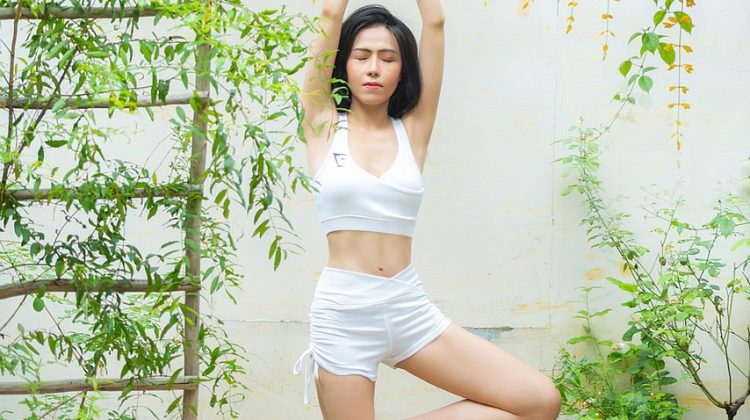
Mindful Flow: How Integrating Yoga and Meditation Transforms Daily Life
In the relentless pace of modern living, finding moments of stillness can feel like chasing a mirage. Notifications buzz, schedules overflow, and even our downtime is often filled with scrolling rather than resting. In this whirlwind, the practice of mindful movement—a harmonious blend of yoga and meditation—offers not just a pause, but a profound recalibration of body, mind, and spirit.
More than a fitness trend or wellness buzzword, mindful movement is a lifestyle approach. It invites you to step into your own life with awareness, to inhabit your body fully, and to move with intention rather than autopilot. By integrating yoga and meditation into your routine, you can cultivate resilience, improve mental clarity, and reconnect with the simple joy of being present.
Here’s how and why weaving these practices into your daily rhythm can change the way you move through the world.
The Essence of Mindful Movement
Mindful movement is exactly what it sounds like: moving your body with full attention and awareness. Unlike a workout focused purely on burning calories or achieving a physical goal, mindful movement emphasizes the experience of the movement itself.
Yoga is the most widely recognized form of mindful movement. Each posture (asana) encourages you to connect breath with motion, observing how muscles engage, joints shift, and balance evolves. Meditation, often seen as stillness, is the mental counterpart—it strengthens your capacity to notice without judgment, to observe sensations, emotions, and thoughts as they arise.
Together, yoga and meditation create a feedback loop. The body grounds the mind, and the mind guides the body. This synergy transforms movement into a form of moving meditation, where every inhale and exhale becomes a gentle reminder to come home to the present.
Why Combine Yoga and Meditation?
Both yoga and meditation are powerful on their own, but when combined, their benefits amplify. Yoga prepares the body for meditation by releasing tension, improving circulation, and calming the nervous system. Meditation, in turn, deepens your yoga practice by training the mind to focus and observe without distraction.
Physical Readiness: Tight hips, stiff shoulders, and restless energy can make seated meditation uncomfortable. Yoga addresses these physical blocks, creating ease for stillness.
Mental Anchoring: Meditation strengthens the mental “muscle” of attention, making it easier to stay present in challenging yoga postures.
Stress Reduction: Both practices lower cortisol levels and activate the parasympathetic nervous system, leaving you calmer and more resilient to daily stressors.
Holistic Integration: Yoga engages the body, meditation engages the mind, and the breath unites the two—offering a complete mind-body practice.
Practical Ways to Integrate Mindful Movement into Your Routine
The beauty of mindful movement is its adaptability. You don’t need a 90-minute studio session or a Himalayan retreat to experience its benefits. Small, consistent moments woven into your existing schedule can be transformative.
- Start Your Morning with Intentional Movement
Instead of reaching for your phone, begin the day with 5–10 minutes of gentle yoga stretches or sun salutations. Even a short sequence can awaken the body and set a mindful tone for the day.
Example Flow: Cat-Cow → Downward Dog → Low Lunge → Seated Twist → Forward Fold.
Mindful Cue: With each movement, silently say “inhale” as you expand and “exhale” as you fold or release.
- Pair Movement with Breath Awareness
The breath is the bridge between body and mind. While practicing yoga, notice the quality of your breathing. Is it shallow or deep, fast or slow? By syncing movement with breath—inhale to lift, exhale to lower—you transform exercise into meditation.
Tip: If your mind wanders, gently guide it back to the rhythm of your breath rather than criticizing yourself.
- Create a Mini Midday Reset
Modern routines often involve long hours of sitting, leading to stiffness and mental fatigue. A short mindful movement break can reset your posture and focus.
Try: Stand up, roll your shoulders, take a few deep breaths, and move through a brief standing flow—like mountain pose, side stretches, and gentle forward folds.
Bonus: End with one minute of stillness, eyes closed, observing how the body feels.
- End the Day with a Moving Wind-Down
Just as you can energize your mornings with yoga, evenings are perfect for slower, restorative practices. Yin poses, gentle hip openers, or supported stretches prepare the body for deep rest.
Suggested Sequence: Seated Forward Fold → Butterfly Pose → Supine Twist → Legs-Up-the-Wall → Savasana.
Meditation Element: As you lie in savasana, scan your body from head to toe, releasing tension with each exhale.
Cultivating Mindfulness Off the Mat
The ultimate goal of integrating yoga and meditation isn’t just to move mindfully during practice—it’s to carry that awareness into everyday life.
Walking Mindfully: Feel your feet connect with the ground, notice your pace, and sync steps with your breath.
Mindful Eating: Before your first bite, pause to notice the aroma, texture, and gratitude for your food.
Micro-Meditations: Take three conscious breaths before opening an email or entering a meeting.
These micro-moments reinforce the lessons learned on the mat: presence, patience, and attention to the subtleties of experience.
Overcoming Common Hurdles
Despite its simplicity, starting a consistent mindful movement practice comes with challenges.
“I don’t have time.”
Start with 5 minutes. Consistency matters more than duration. Gradually expand as it becomes a natural part of your day.
“I’m not flexible enough for yoga.”
Yoga is not about touching your toes—it’s about meeting your body where it is. Use props, bend your knees, and focus on the breath rather than aesthetics.
“My mind won’t stop wandering.”
That is meditation. The act of noticing your wandering and gently returning to the present is the practice. Over time, focus strengthens naturally.
The Science Behind Mindful Movement
Research consistently highlights the benefits of integrating yoga and meditation:
Stress and Anxiety Reduction: Studies show that combining mindful movement with breathwork reduces stress markers and supports emotional regulation.
Improved Sleep and Energy: Gentle evening yoga paired with meditation lowers heart rate and relaxes the nervous system, enhancing sleep quality.
Enhanced Focus and Memory: Meditation’s impact on neuroplasticity can improve concentration, while yoga’s physical engagement keeps the brain-body connection sharp.
Physical Health: Beyond flexibility, mindful movement enhances joint stability, core strength, and circulation—all contributing to overall vitality.
Creating a Sustainable Routine
The key to lasting transformation lies in making mindful movement an enjoyable, non-negotiable part of your routine.
Anchor to Existing Habits: Pair your morning tea with a short flow, or meditate right after brushing your teeth.
Keep It Simple: A single sun salutation or three minutes of seated breathing counts.
Mix Structure with Freedom: Some days might call for a guided video; other days, let your body dictate the flow.
Reflect on the Impact: Journaling or simply noticing how you feel after practice reinforces motivation and self-awareness.










